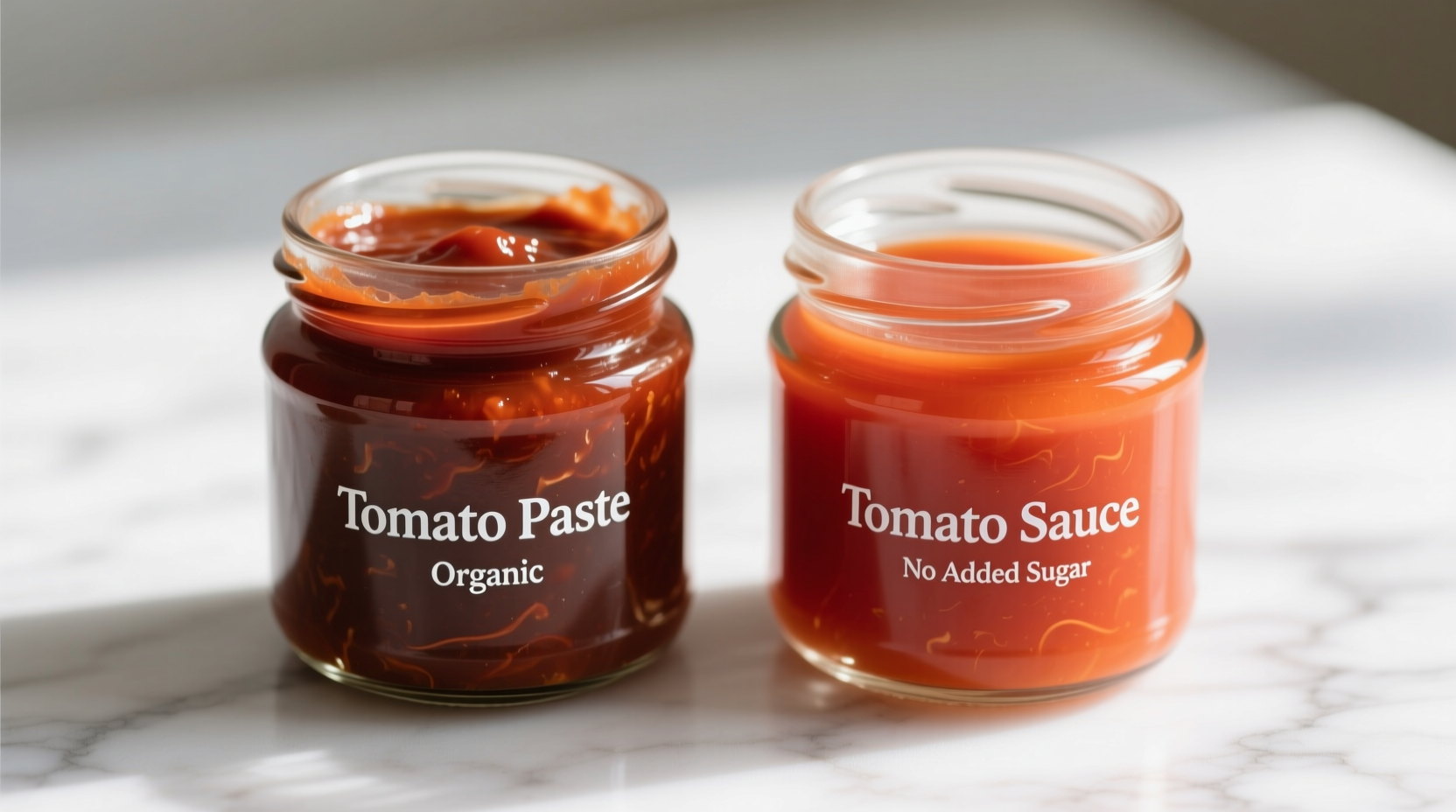Confused about whether you can swap tomato paste for tomato sauce in your favorite recipes? You're not alone. This common kitchen dilemma trips up home cooks daily, potentially ruining meals with unexpected textures and flavors. Let's clarify the critical distinctions between these pantry staples so you can cook with confidence.
Understanding the Core Differences
Tomato paste and tomato sauce serve different culinary purposes despite coming from the same base ingredient. The key distinction lies in their concentration levels and processing methods. Tomato paste undergoes extended cooking to remove nearly all water content, creating an intense tomato flavor foundation. Tomato sauce maintains more liquid and typically includes herbs, spices, and sometimes sugar for balance.
| Characteristic | Tomato Paste | Tomato Sauce |
|---|---|---|
| Tomato Solids | 24-30% | 6-8% |
| Texture | Thick, paste-like | Smooth, pourable |
| Flavor Profile | Intensely concentrated tomato | Balanced with seasonings |
| Common Additives | None (pure tomato) | Herbs, spices, sugar |
| Primary Culinary Role | Flavor foundation | Ready-to-use component |
How Production Methods Create Distinct Products
The journey from fresh tomatoes to your pantry shelf follows different paths for each product. According to USDA standards, tomato paste production involves triple concentration through extended cooking, reducing 7 pounds of fresh tomatoes to just 1 pound of paste. This process develops deep umami flavors through caramelization. Tomato sauce undergoes single concentration with added ingredients during processing to create a ready-to-use product.
Food science research from the Institute of Food Technologists confirms that the extended cooking of tomato paste creates unique flavor compounds not present in less concentrated tomato products. This explains why you can't simply reduce tomato sauce to make paste without compromising flavor quality.

When Substitutions Work (and When They Don't)
Understanding context boundaries prevents kitchen disasters. You can substitute tomato paste for tomato sauce in specific scenarios with proper adjustments, but not vice versa without significant modifications.
Successful substitutions:
- When a recipe calls for tomato sauce and you have paste: Mix 1 part paste with 2 parts water plus seasonings
- When thickening sauces: Add 1-2 tablespoons of paste per cup of sauce
- For pizza sauce base: Paste provides superior flavor concentration
Problematic substitutions:
- Replacing paste with sauce in recipes requiring intense tomato flavor
- Using sauce instead of paste as a base for long-cooked dishes
- Substituting without adjusting liquid content in recipes
Practical Applications in Your Kitchen
Professional chefs leverage these products differently based on their unique properties. Tomato paste shines as a flavor foundation - sauté it in olive oil first to deepen its flavor through the Maillard reaction. This technique transforms simple dishes like meatloaf, soups, and stews. Tomato sauce works best as a ready component in dishes like baked ziti, quick pasta sauces, and as a pizza base.
According to culinary research from the Culinary Institute of America, properly using tomato paste as a flavor base can reduce overall sodium needs by 25% while maintaining perceived flavor intensity. This makes it valuable for health-conscious cooking without sacrificing taste.
Storage and Shelf Life Considerations
Both products have different storage requirements after opening. Tomato paste, due to its high concentration, lasts longer when properly stored. Transfer unused paste to an airtight container and it will keep for 5-7 days in the refrigerator or up to 6 months frozen in ice cube trays for portion control. Tomato sauce typically maintains quality for 3-5 days refrigerated once opened.
Food safety data from the National Center for Home Food Preservation confirms that the higher acid content in properly processed tomato paste creates a less hospitable environment for bacterial growth compared to less concentrated tomato products.
Avoiding Common Culinary Mistakes
Many home cooks make these critical errors with tomato products:
- Adding tomato paste directly to dishes without cooking it first
- Using tomato sauce as a base for long-cooked dishes (dilutes flavor)
- Not adjusting liquid content when substituting products
- Confusing tomato paste with tomato puree (different concentration levels)
Mastering these distinctions transforms your cooking. As professional chefs know, understanding why these products differ helps you make informed substitutions rather than following recipes blindly. This knowledge applies across cuisines - from Italian marinara to Indian curries to Mexican salsas.











 浙公网安备
33010002000092号
浙公网安备
33010002000092号 浙B2-20120091-4
浙B2-20120091-4